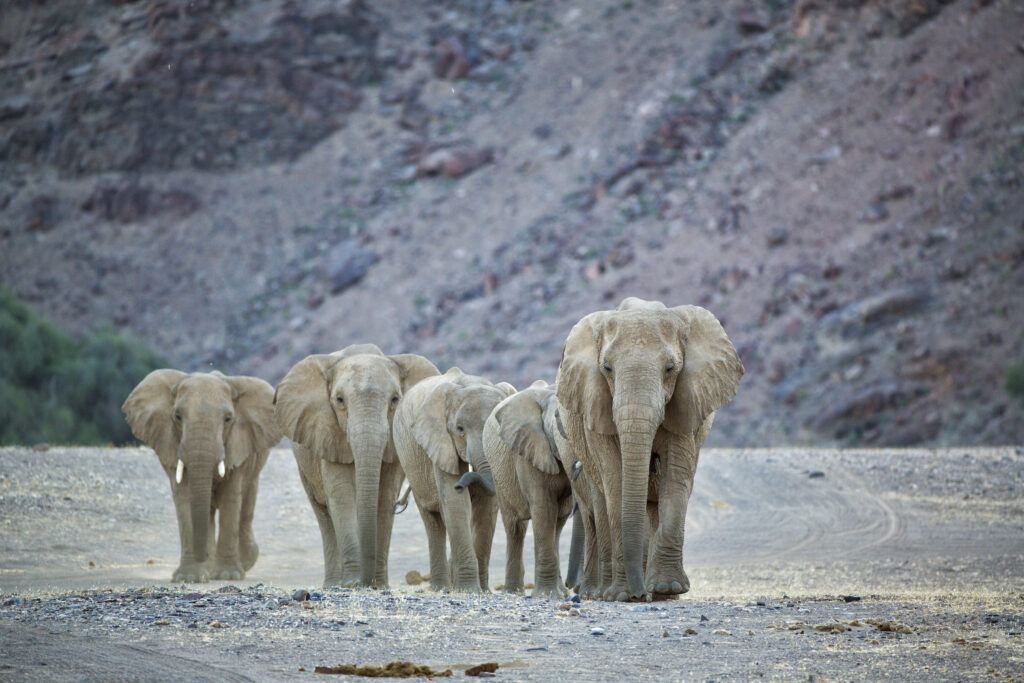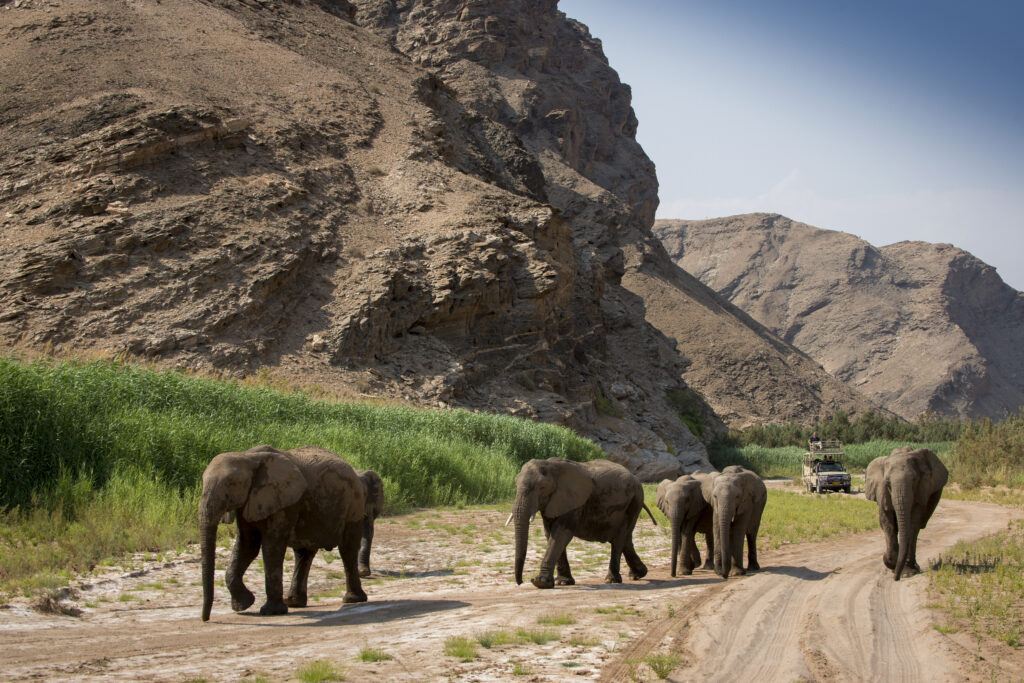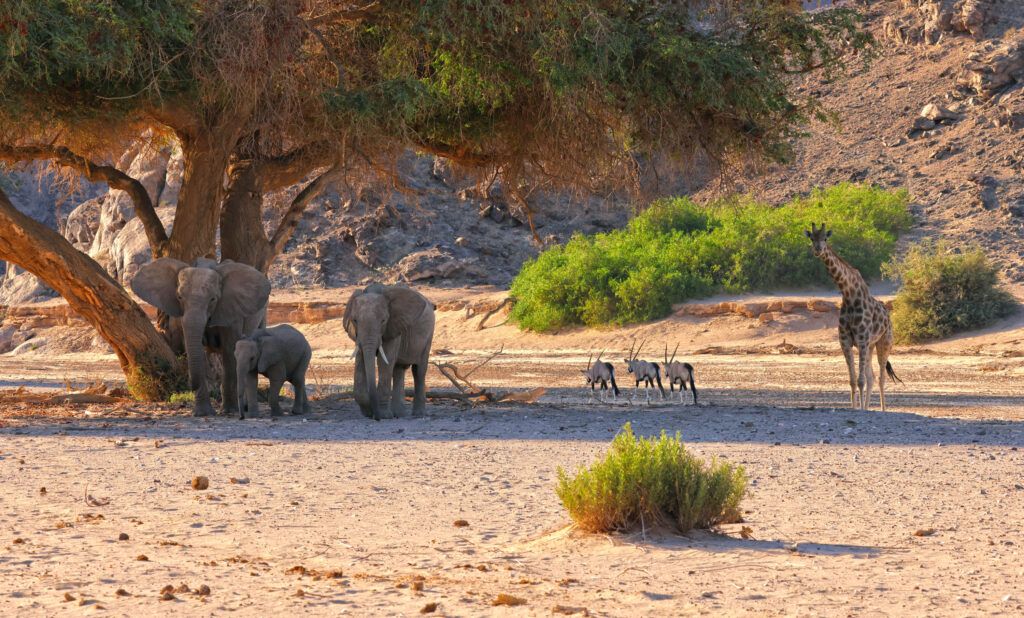Elephants (Loxodonta africana) are an iconic and important species in Namibia, contributing to the country’s biodiversity and attracting tourists from around the world. Here’s a comprehensive overview of elephants in Namibia:
Elephants in Namibia are primarily found in various regions, including national parks, game reserves, and communal conservancies. Notable areas include Etosha National Park, Bwabwata National Park, Mudumu National Park, and the Zambezi Region.
Namibia is home to a relatively small but stable elephant population compared to some other African countries. The population fluctuates due to factors like habitat availability, food resources, and human-wildlife conflict.
Elephants in Namibia inhabit diverse ecosystems, ranging from savannas and woodlands to riverine areas. They are known to move seasonally in search of food and water, and their presence contributes to shaping the landscape.
Like in many other parts of Africa, Namibian elephants face conservation challenges such as habitat loss, human-wildlife conflict (particularly with farmers), and poaching for ivory. Efforts are made to address these challenges through various conservation initiatives.
Elephants sometimes come into conflict with local communities, especially in areas where agriculture is practiced. Elephants can damage crops and water infrastructure, leading to tensions between humans and elephants. Community-based conservation programs aim to mitigate these conflicts and foster coexistence.
Namibia has implemented conservation strategies to protect elephants. These include anti-poaching efforts, habitat preservation, and community involvement in conservation initiatives. Tourism also plays a role in funding conservation projects and raising awareness about the importance of protecting elephants.
Elephants are a major attraction for wildlife tourism in Namibia. Tourists visit national parks and conservancies to observe these gentle giants in their natural habitats. Responsible tourism contributes to local economies and provides funding for conservation efforts.
Conservationists and researchers conduct studies to monitor elephant behavior, movements, and population dynamics. This research helps inform conservation strategies and management plans.
Namibia collaborates with international organizations and participates in regional and global initiatives to conserve elephants. This includes efforts to combat illegal wildlife trade and protect elephants across their range.
It’s worth noting that Namibia’s approach to wildlife conservation often involves community-based natural resource management, where local communities are actively involved in the conservation and sustainable use of wildlife. This approach aims to ensure that communities benefit from wildlife conservation and have incentives to protect these species.






